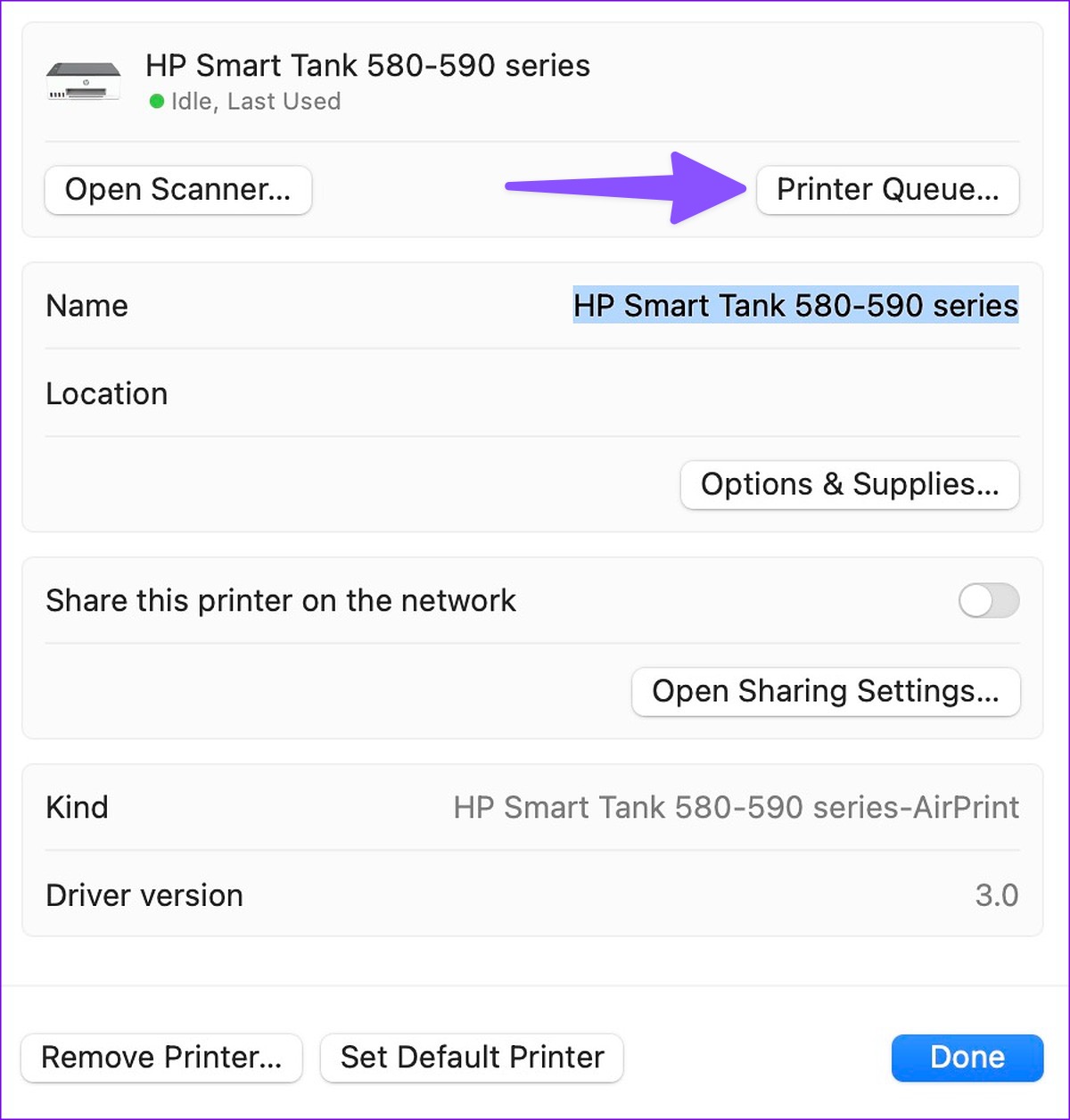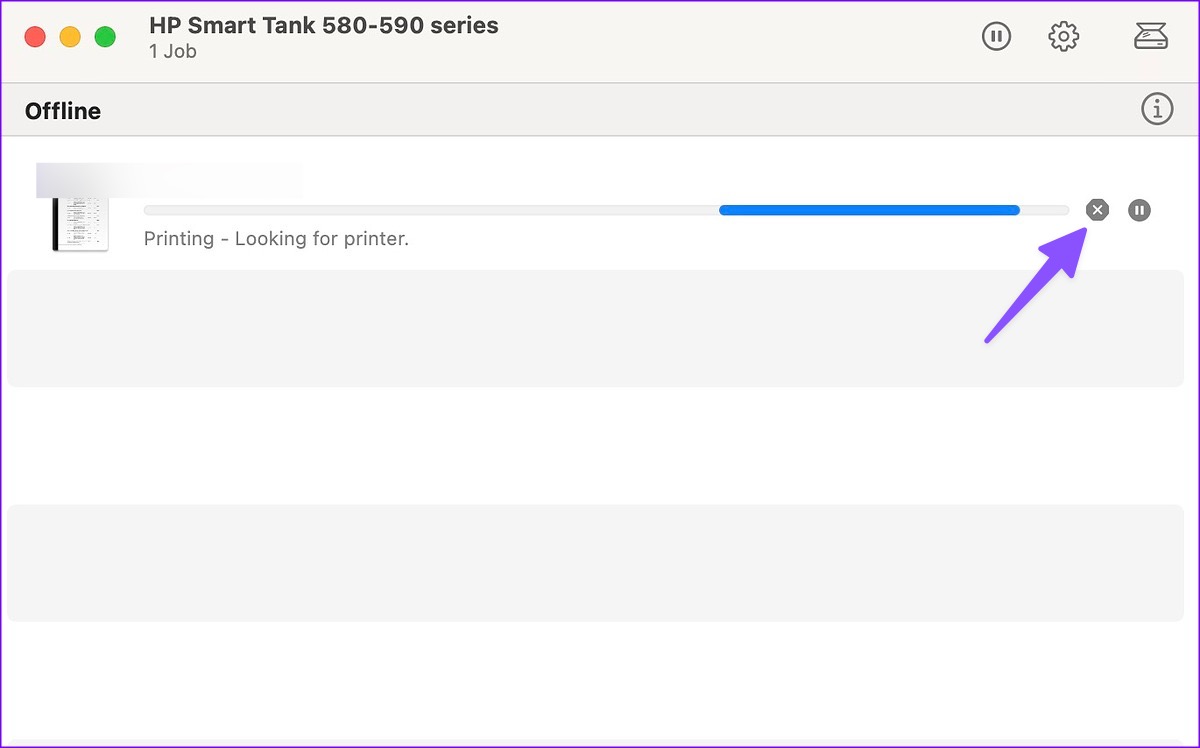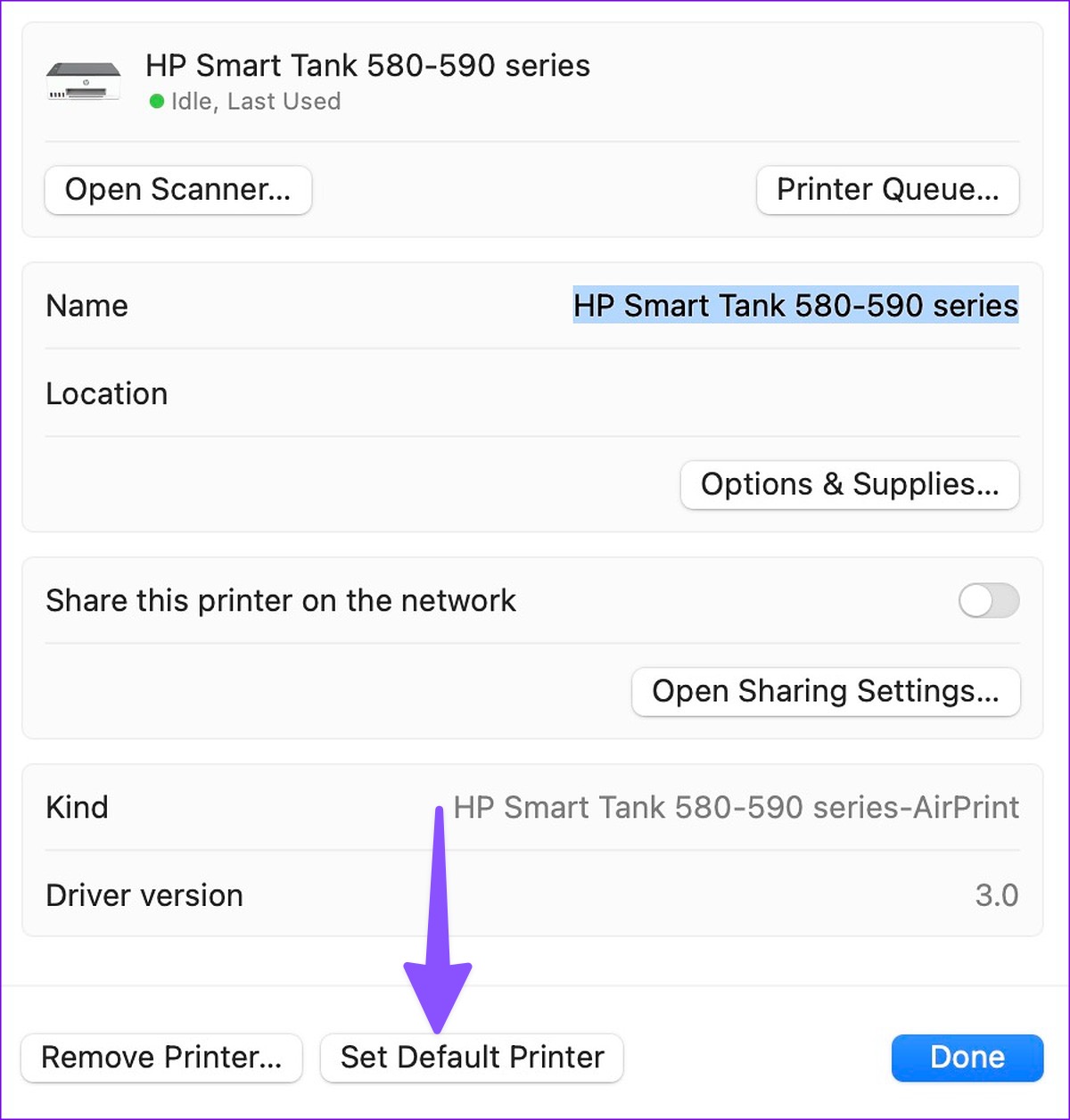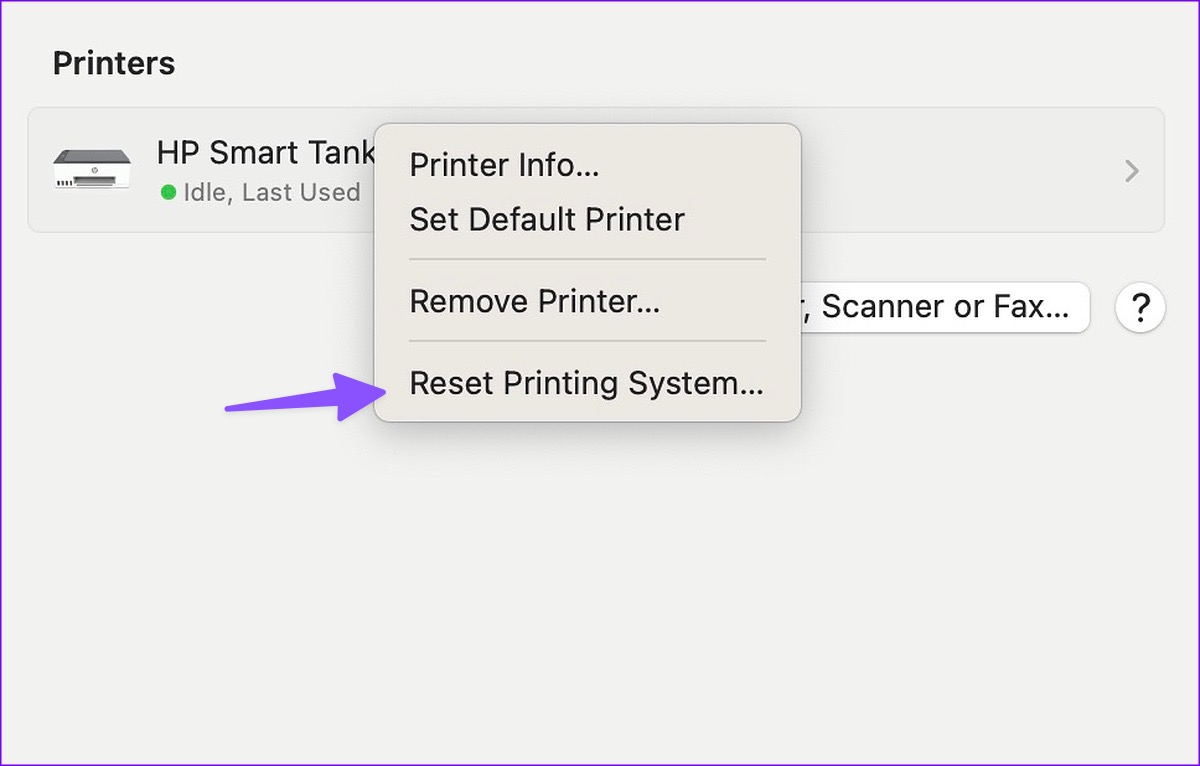macOS supports most printers to provide seamless printing functionality. However, sometimes your Mac fails to detect the connected printer. Whether you’re using a USB or wireless connection, read on for troubleshooting methods to fix the printer not showing up on your Mac.

MacBook not detecting a printer can disrupt your workflow. First, we’ll cover some basics and move on to advanced tips to fix the printer not showing up on your Mac.
1. Check the cable connection
Check the cable if you have an old printer or prefer a wired connection. If there is a loose connection or a cable with severe cuts and damage, replace it with a new one. Ideally, it’s a good idea to go for an official cable from your printer manufacturer’s website only. Third-party cables may not work properly with your printer.
2. Check your printer
Before printing a document, make sure your printer meets the following requirements:
- Connect your printer to a power source and make sure it is turned on.
- Make sure there is enough paper and check if the paper is not jammed.
- It contains enough ink or toner.
If your Mac still can’t find the printer, keep reading to learn more.
3. Check network connection on Mac and printer
You must connect your Mac and your printer to the same Wi-Fi network to wirelessly print documents from your MacBook. The steps for connecting or changing a wireless network differ between printer manufacturers. Check the official documentation that came with your printer or get the user manual from the manufacturer’s website.
4. Check the print queue
If your current document to be printed is stuck in the print queue, the printer will not print any more documents. You can either wait for the current process to complete or cancel the current queue and try again. Here’s what you need to do.
Usually, you will need to find the print queue option on the Mac dock. If you don’t see it on the dock, follow the steps below.
Step 1: Click the Apple icon in the upper left corner of the menu bar.
2nd step: Select System Settings from the pop-up menu.

Step 3: Click Printers & Scanners in the left sidebar.
Step 4: Select your preferred printer from the right pane.

Step 5: Click the Print Queue button.

Step 6: Select the “x” mark next to old print queues to stop any running process and try printing a document again.

5. Manually add a printer on Mac
If your printer is not showing up on Mac, try adding it manually. Follow the steps below.
Step 1: Click the Apple icon in the upper left corner of the menu bar.
2nd step: Select System Settings from the pop-up menu.

Step 3: Click Printers & Scanners in the left sidebar.
Step 4: Click the “Add Printer, Scanner, or Fax” button in the right pane.

Step 5: This will open the Add Printer dialog box. Click the Host menu icon in the top center.
Step 6: Enter your printer’s hostname or IP address to allow your Mac to detect your printer. Next, click the Add button in the lower right corner.

You can open a document or an Excel sheet to try printing it again.
6. Set Default Printer
Once your printer is active and ready to use, set it as default on your Mac for an error-free printing process.
Step 1: Click the Apple icon in the upper left corner of the menu bar.
2nd step: Select System Settings from the pop-up menu.

Step 3: Click Printers & Scanners in the left sidebar.
Step 4: Select your preferred printer from the right pane.

Step 5: Open a printer from the right pane. Make sure your printer shows a green indicator. It confirms an active status.

Step 6: Click Set Default Printer.

7. Reset the printing system
Your printer shows up on your Mac but fails to print a document? It’s time to reset the printing system for your favorite printer.
Step 1: Click the Apple icon in the upper left corner of the menu bar.
2nd step: Select System Settings from the pop-up menu.

Step 3: Click Printers & Scanners in the left sidebar.
Step 4: Select the printer in the right pane.

Step 5: Press the Control key and select the default printer.
Step 6: Select “Reset Printing System” and try again.

8. Delete and add printer
If your MacBook does not detect the printer during the printing process, you can delete the current printer and add it again.
Step 1: Click the Apple icon in the upper left corner of the menu bar.
2nd step: Select System Settings from the pop-up menu.

Step 3: Click Printers & Scanners in the left sidebar.
Step 4: Select the printer in the right pane.

Step 5: Click Delete Printer.

Step 6: You can manually add the same printer again (check step five above).
9. Enable LAN Print Sharing
If your printer doesn’t appear on other Macs on the same network, share your current printer on the network. Print sharing is useful for non-wireless printers that are connected to your Mac with a cable. For a wireless or AirPrint-enabled printer, you don’t need to share it on the local network.
Step 1: Click the Apple icon in the upper left corner of the menu bar.
2nd step: Select System Settings from the pop-up menu.

Step 3: Click Printers & Scanners in the left sidebar.
Step 4: Select the printer in the right pane.

Step 5: Enable the “Share this printer on the network” toggle.

Your printer should appear on other Macs using the same local network.
10. Update macOS
An outdated version of macOS can lead to issues like “printer not showing up on Mac”. You need to update macOS to the latest version.
Step 1: Click the Apple icon in the upper left corner of the menu bar.
2nd step: Select System Settings from the pop-up menu.

Step 3: Select General from the sidebar and click Software Update.

Step 4: Download and install the latest operating system update and check your printer again.
Print documents on the go
A wireless printer provides the much-needed convenience to print documents without any cable connection. You can read our dedicated guide to finding the best wireless printers for Mac.
